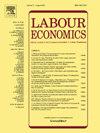Robots and labor in nursing homes
IF 2.6
2区 经济学
Q2 ECONOMICS
引用次数: 0
Abstract
How do employment, tasks, and productivity change with robot adoption? Unlike manufacturing, little is known about these issues in the service sector, where robot adoption is expanding. As a first step towards filling this gap, we study Japanese nursing homes using original facility-level panel data that includes the different robots used and the tasks performed. We find that robot adoption is accompanied by an increase in employment and retention and the relationship is strongest for non-regular care workers and monitoring robots. The share of specific tasks performed by robots increases with the adoption of the respective type of robot, leading to reallocation of care worker effort to “human touch” tasks that support quality care. Robots are associated with improved quality (reduction in restraint use and pressure ulcers) and productivity.
养老院的机器人和劳动力
随着机器人的采用,就业、任务和生产力会发生怎样的变化?与制造业不同,在机器人应用不断扩大的服务业,人们对这些问题知之甚少。作为填补这一空白的第一步,我们使用原始设施级别的面板数据研究了日本养老院,其中包括使用的不同机器人和执行的任务。我们发现,机器人的采用伴随着就业和保留的增加,这种关系对于非正规护理人员和监控机器人来说是最强的。机器人执行的特定任务的份额随着各自类型机器人的采用而增加,导致护理人员的工作重新分配到支持高质量护理的“人性化”任务上。机器人与提高质量(减少约束使用和压疮)和生产力有关。
本文章由计算机程序翻译,如有差异,请以英文原文为准。
求助全文
约1分钟内获得全文
求助全文
来源期刊

Labour Economics
ECONOMICS-
CiteScore
3.60
自引率
8.30%
发文量
142
期刊介绍:
Labour Economics is devoted to publishing research in the field of labour economics both on the microeconomic and on the macroeconomic level, in a balanced mix of theory, empirical testing and policy applications. It gives due recognition to analysis and explanation of institutional arrangements of national labour markets and the impact of these institutions on labour market outcomes.
 求助内容:
求助内容: 应助结果提醒方式:
应助结果提醒方式:


